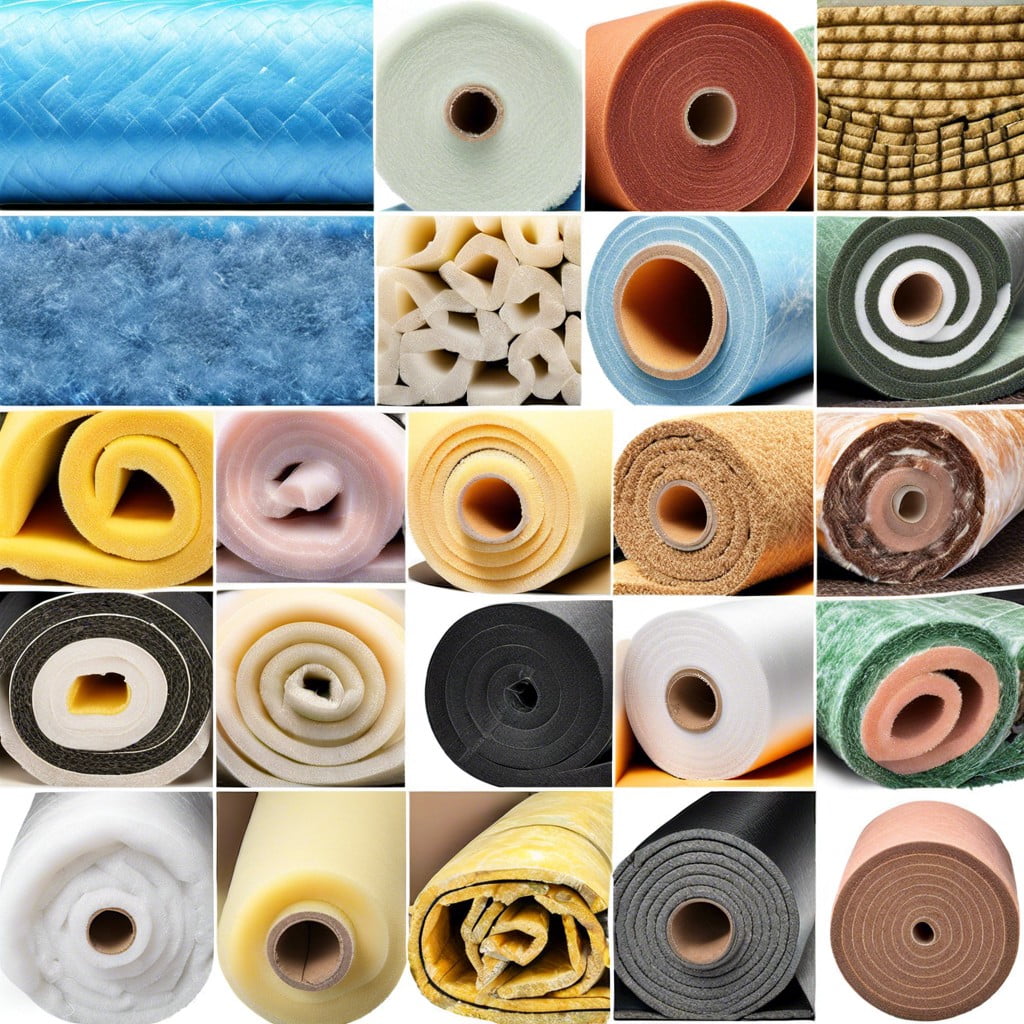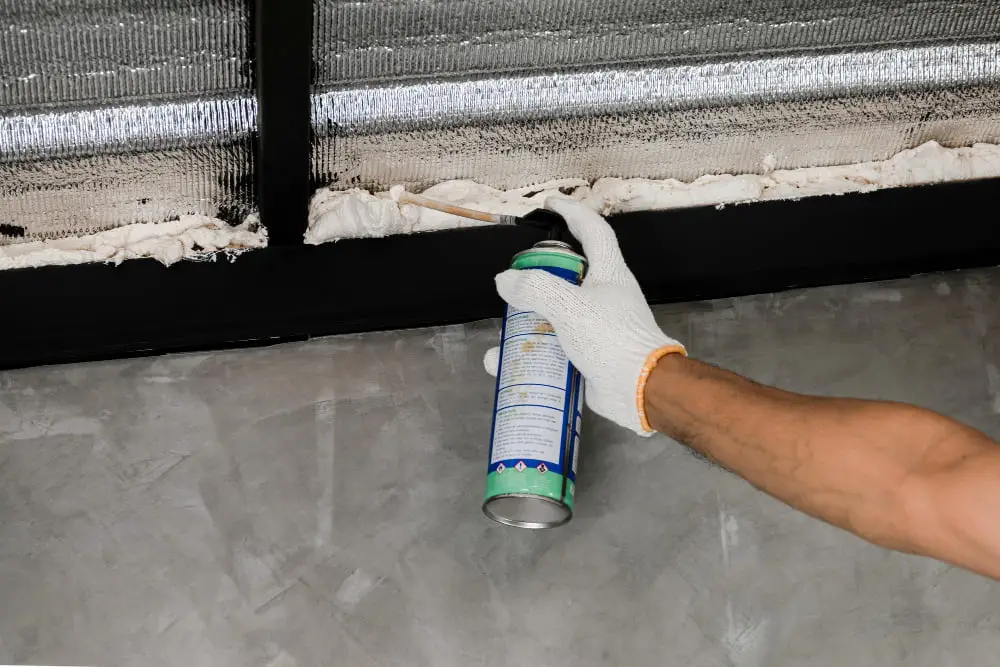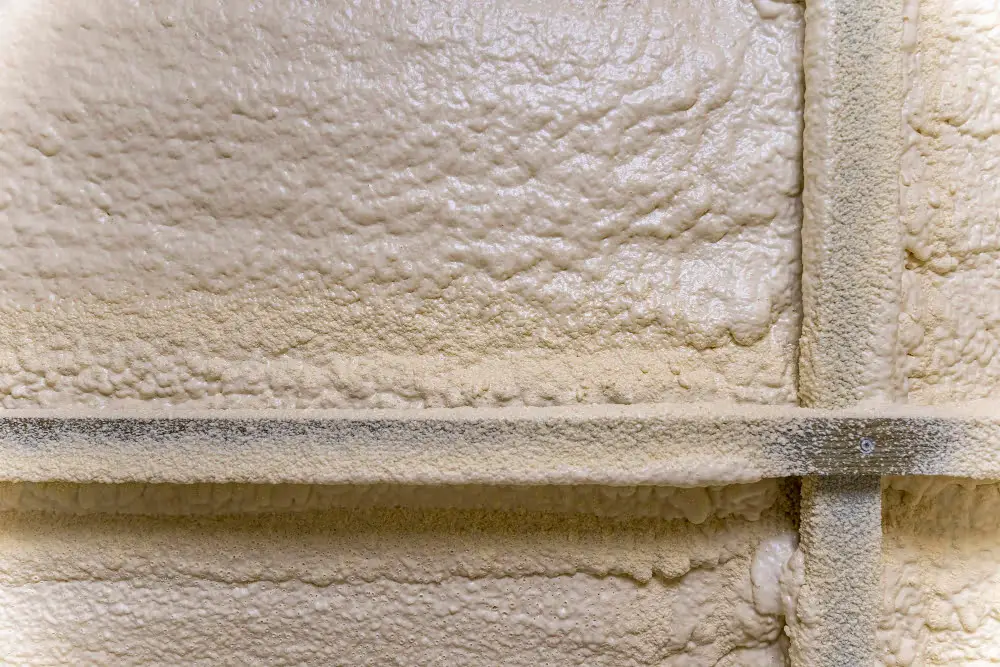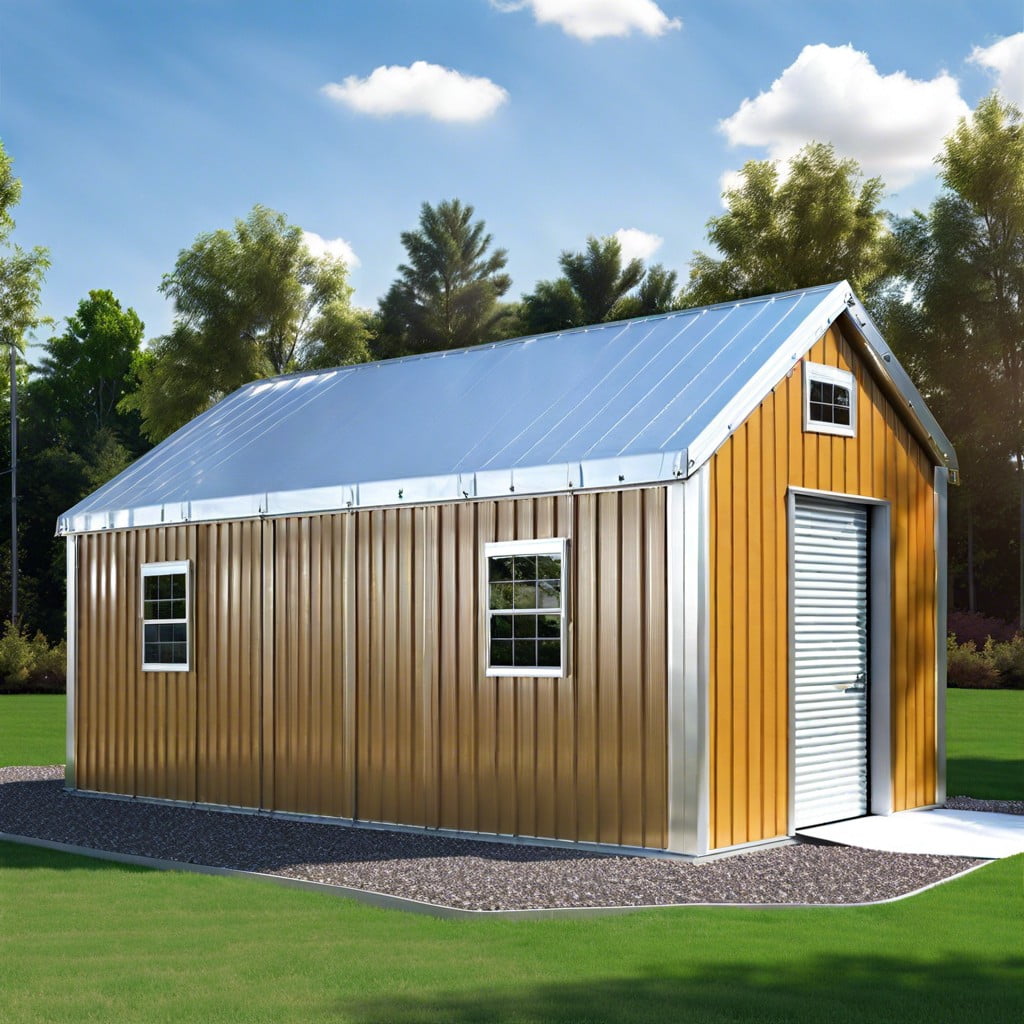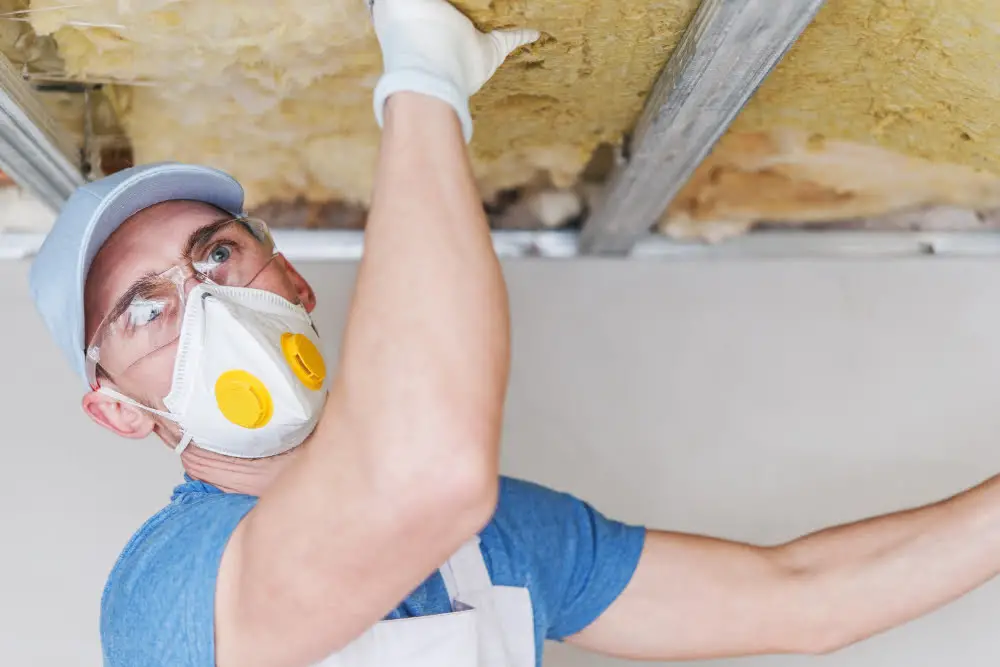This article provides practical insights on selecting and installing the right insulation for your metal building to enhance energy efficiency and comfort.
Key takeaways:
- Insulation enhances energy efficiency and comfort in metal buildings.
- Different insulation types have unique benefits and installation considerations.
- R-values indicate thermal resistance and vary for different insulation materials.
- Consider climate, building usage, budget, and installation requirements when choosing insulation.
- Compare factors such as thermal performance, installation, moisture resistance, space efficiency, cost, and lifespan when comparing insulation options.
WHY INSULATE A METAL BUILDING?
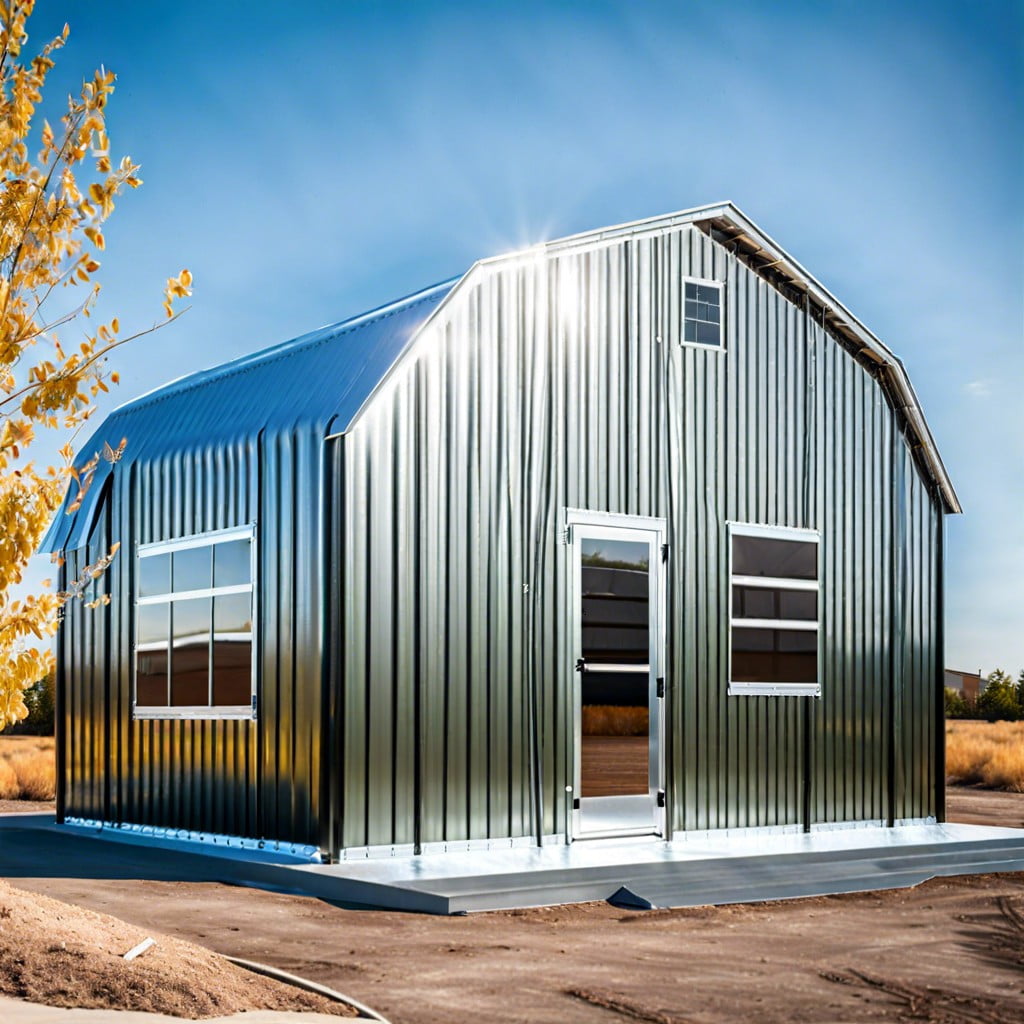
Insulation transforms metal buildings into energy-efficient havens, cutting the cost of heating and cooling. It’s the shield that keeps interior temperatures comfortable year-round, despite the scorching summers and frigid winters knocking on the doors outside. Imagine your metal building as a thermos; insulation is what keeps your coffee hot or your iced tea cold.
Bracing against the elements, insulation also prevents condensation, that sneaky culprit that encourages rust and corrosion. With proper insulation, your metal structure’s lifespan can stretch longer than a well-cared-for turtle.
Insulation keeps the racket down, too. It muffles the clamor from rain tap-dancing on the roof or the commotion from nearby roads, creating a serene space.
Finally, let’s talk about the ‘green’ factor. Insulation ranks high in eco-friendly building practices by reducing energy usage. It’s like giving Mother Nature a high five. It’s a visible step towards sustainability, something that rings well with environmentally conscious customers and partners.
In short, insulation is the unsung hero in the metal building narrative. It’s about comfort, cost-effectiveness, durability, noise reduction, and environmental stewardship.
TYPES OF METAL BUILDING INSULATION
Spray Foam Insulation: This barrier is quite the chameleon, conforming to nooks and crannies with ease. It offers high R-values and seals gaps thoroughly, making it a top draft blocker. But keep your wallet handy – its benefits come at a higher cost.
Fiberglass Batt Insulation: Think of this as the comfy quilt of insulation – familiar and budget-friendly. However, its blanket-like nature means it demands precision during installation to avoid pesky gaps or overlaps.
Rigid Board Insulation: This option stands firm, literally. Its rigid panels cut to size offer consistent coverage but can be a bit of a puzzle to install correctly around the structural features of a building.
Reflective Insulation or Radiant Barriers: Looking for something to bounce the sun’s energy back into space? Here’s your ticket. This shiny material targets radiant heat, making it a star in hot climates.
Loose-fill Insulation: A bit like filling a giant bean bag, loose-fill is blown or poured into place. It’s versatile, filling irregular spaces well. But keep in mind, proper application is key; it’s not a DIY throw-it-in-and-hope-for-the-best deal.
Each type of insulation plays a different role in the comfort and energy efficiency of your metal building. Selecting the best fit depends on various factors, including climate, building use, and budget. A well-insulated metal building wards off the frosty bite of winter and the searing heat of summer, keeping its contents – from machinery to people – in a ‘just right’ Goldilocks zone.
INSULATION R-VALUES BY TYPE AND PRICE RANGE
Navigating the world of R-values need not involve a treasure map; it’s all about the resistance to heat flow. A higher R-value means a toastier insides for you and less shivering during chilly interludes. Picture a puffy down jacket on a crisp winter day—that higher R-value is your snug shield against the frost.
On the thriftier side of the coin, fiberglass blankets come out to play. Easy on your purse strings, they sport R-values from R-3 to R-4 per inch. Yet, they’re not lone rangers. Rigid foam boards, a bit pricier, saunter in with R-values between R-4 and R-6.5 per inch, offering a robust defense against the cold without breaking the bank.
Should you long for the crème de la crème, spray foam insulation enters the ring. It’s a heavyweight champion in the R-value arena, boasting anywhere from R-6 to R-7 per inch. Though your wallet might feel a pinch, this stalwart ally provides an air-tight seal with the added bonus of acting as a moisture barricade.
Remember, your choice in the marketplace isn’t just about the R-value ticket; consider the long-term savings on your heating and cooling bill. It’s a match of initial investment versus future cost snipping. It’s akin to choosing between a band-aid and a cure, as better insulation can shrink your energy bills for years down the road.
CHOOSING THE RIGHT INSULATION FOR YOUR METAL BUILDING
Deciding on insulation for your metal building involves considering several key factors:
Climate plays a central role in your choice. In colder regions, a higher R-value, which measures thermal resistance, is essential to retain heat. Conversely, in warmer climates, preventing heat gain might be your main concern.
Building usage also dictates insulation type. If housing temperature-sensitive goods or animals, maintaining a stable interior climate is crucial. For a workshop or garage, comfort and condensation prevention might top the list.
The budget will influence your decision. Fiberglass bats are a cost-effective solution but may require additional vapor barriers. Spray foam, while pricier, provides a high R-value and an air-tight seal.
Future energy savings should be factored in. Investing in better insulation can reduce heating and cooling costs, leading to long-term savings despite higher upfront costs.
Installation is key. Some insulation can easily be done DIY, like laying fiberglass bats. Others, such as spray foam, typically require professional installation.
Maintenance requirements can sway your decision. Some materials, like rigid foam, are low-maintenance, while others may need occasional replacement or adjustment.
Overall, assessing your specific needs and weighing them against the options available will guide you to the insulation best suited for your metal building. Keep in mind, the right insulation will promote comfort, energy efficiency, and longevity of your structure.
COMPARING METAL BUILDING INSULATION OPTIONS
When weighing the merits of various insulation materials, consider these key factors:
- First up, thermal performance. Fiberglass bats may be budget-friendly, but closed-cell spray foam takes the cake for keeping temperatures steady. Reflective foil? Best for those shiny sunbeams it bounces back.
- Next, let’s talk installation. If you’re a weekend warrior with a toolkit, rolls of fiberglass or rigid foam panels might be your jam. But, if mixing and spraying foam sounds like a Saturday well spent, professional help is your best bet.
- Moisture’s no joke, either. Some materials act like sponges, while others, like rigid foam, laugh in the face of dampness.
- Don’t forget about space. With metal buildings, every inch counts, so if you’re after high R-value without sacrificing square footage, foam sprays expand to fit like those stretchy jeans after Thanksgiving dinner.
- Money – it’s a biggie. Reflective foil might pinch your pennies at first, but shelling out for spray foam could mean savings on heating and cooling down the line.
- Finally, think about your building’s final act. Fiberglass bats bow out gracefully, often recyclable. Foam, on the other hand, tends to stick around, like that one party guest who just won’t take the hint.
Choose wisely; after all, you and your metal building are in this for the long haul.
Recap
